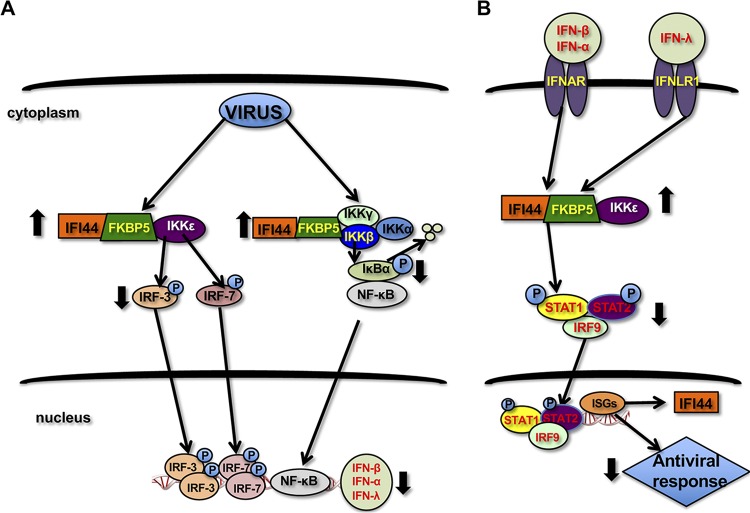FIG 8.
Graphical abstract of the effects of IFI44 on IFN responses. After virus infections, viral components are recognized by PRRs. This recognition leads to the activation of kinases such as IKKε, which phosphorylates and activates transcription factors IRF-3 and IRF-7, and IKKα and IKKβ, which phosphorylates IκBα, leading to IκBα degradation and NF-κB activation. IRF-3, IRF-7, and NF-κB are critical for the induction of expression of type I and III IFNs. Type I and III IFNs signal through IFNAR and IFNLR1, respectively, leading to STAT1 and STAT2 phosphorylation. In addition, STAT1 is phosphorylated by IKKε during IFN signaling, which is the step critical for the induction of IFN antiviral responses. Activation of STAT1/STAT2 leads to the induction of ISGs with antiviral activities, including IFI44. IFI44 interacts with FKBP5, which in turn interacts with IKKα, IKKβ, and IKKε kinases. In the presence of FKBP5, IFI44 decreases the ability of IKKε to phosphorylate IRF-3 (and, most probably, IRF-7 and STAT1) and the ability of IKKβ to phosphorylate IkBα. As a consequence, the levels of IRF-3 activation, NF-κB activation, and IFN production (A) are decreased in the presence of IFI44, leading to diminished antiviral responses (B) after virus infections.

